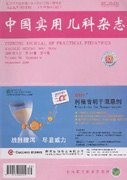|
Association of a 4-locus gene prediction model of asthma with the asthma predictive index and atopy in children
Subspecialty Group of Pediatric Allergy and Asthma,the Chinese Society of Allergy(preparatory)
2021, 36(6):
441-446.
DOI: 10.19538/j.ek2021060610
Objective To examine the associations of 4-locus gene prediction model of asthma,including ADRB2 rs1042713(R16G),FcER1B rs569108(E237G),IL13 rs20541(R110Q) and IL4 rs2243250(-590C>T),with asthma predictive index(API) and atopy. Methods In this study,1490 preschool children with wheezing were randomly recruited from Shanghai Children’s Medical Center and other 10 domestic medical institutions from June 2019 to November 2020 using a multicenter empirical research method. The children were genotyped for the above four single nucleotide polymorphisms(SNPs) by matrix-assisted laser desorption/ionization time-of-flight mass spectrometry,and then divided into high or low risk group based on the genotypes. The clinical history of the preschool children with wheezing was collected,and serum specific IgE was detected by ImmunoCAP assays,which was used as atopic index to analyze the association of API and atopy with the high-risk and low-risk groups of asthma. Results Of the 1490 children,680 were at high risk for asthma and 810 were at low risk. For both stringent and loose API,the positive rate was significantly higher in high-risk patients than in low-risk patients(stringent API,OR=5.33,P<0.001;loose API,OR=2.63,P<0.001). In addition,positive atopy accounted for 73.43% in high-risk patients,and it was 60.80% in low-risk patients;the risk of positive atopy was 1.78 times higher in patients at high risk than that at low risk for asthma(P<0.01). Conclusions The results indicates that the 4-locus asthma prediction model consisting of IL13 rs20541,IL4 rs2243250,ADRB2 rs1042713,and FcER1B rs569108 is associated with the API and atopy,which may provide an important theoretical basis for predicting asthma and atopy in preschool children.
|

